
Updated with information from EWG’s 2019 Guide to Sunscreens
As with so many things in parenting, choosing a sunscreen for kids can be confusing and anxiety-provoking. You don’t want your kids to get sunburned or have other skin damage that can lead to premature aging and cancer later in life. But neither do you want to coat them in sunscreen – and get yelled at while doing it – only to find out later that it’s loaded with chemicals that may cause other health problems.
Some chemicals can have a more severe impact on the health of children than on adults, because children’s bodies, organs, brains and hormones are still developing, building the physiological systems they will live with for the rest of their lives. Adding exposures to hormone disruptors and carcinogens in early childhood can affect their lifetime health. And there are a number of chemicals in common sunscreens that raise concerns, including oxybenzone and retinyl palmitate. The science is not settled, but there are plenty of good alternatives, so why take the risk?
Can you just tell me what *&#%! sunscreen to buy?
No, sorry, we can’t.
But you can choose one from our list of Best Scoring Sunscreens for Kids. We can also teach you how to shop, which is especially helpful when you don’t have access to the web. Knowing what to look for on the label will help you make the best choice for your kids.
Avoid:
- Spray sunscreens and bug-repellant-and-sunscreen combo sprays
- SPF greater than 50
- Oxybenzone (in the active ingredients)
- Fragrance
- Retinyl palmitate, retinol or vitamin A
We don’t recommend spray sunscreens or those with SPF over 50, so eliminate those right off the bat. Sunscreen sprays pose inhalation risks and may not offer a thick and even enough application to protect against the sun’s rays. Meanwhile, sunscreens with SPFs over 50 provide only slightly better protection than those with low SPF values, and they have a worse balance of protection, especially for UVA rays. But they often fool people into thinking they can stay outdoors longer. We don’t recommend bug repellant and sunscreen combination products because you don’t necessarily need one just because you need the other, so why use the chemicals unnecessarily?
Choose:
- A mineral sunscreen with zinc oxide or titanium dioxide (in the active ingredient(s))
- If you must choose a chemical sunscreen, look for avobenzone (3 percent; in the active ingredients)
Avobenzone reduces UVA damage that can lead to skin aging and cancer. However, choose products carefully: Avobenzone is often used in combination with other chemical active ingredients, many of which are hormone disruptors.
Help! Sunscreen is messy and frustrating and has to be reapplied so often! What’s the best way to get it on my kids and keep it there?
We can relate. Putting sunscreen on wet, fussy kids can suck all the joy out of a relaxing summer day. But then again, so can a sunburn.
First, dress kids in shirts and shorts, even at the pool. Reducing the amount of sunscreen needed by covering your kids up with fabric means you’ve cut your battle in half or more. Shirts and shorts help protect their skin during hikes and play time out of the water, and rashguard-type clothing can be used on top of (or instead of) swimsuits. Plus, kids’ shoulders and backs are prone to serious sunburn – especially when they’re playing in water – so using a barrier of clothing between their skin and the sun is simple and important. Add a hat and you’ve reduced your kids’ chances of major sunburns and skin damage.
Second – and sorry if we’re boring you – but avoid the sun as much as you can, especially with infants and young children. Plan to bring kids in for lunch or a nap midday, when the sun’s rays are strongest and the risk of UV damage is highest. And come equipped with a plan for shade – whether it’s a tree at the park, a pop-up shade tent or a dash for an umbrella-covered spot at the pool. In short, don’t go outside unless you have a plan to give the kids a place to sit, eat and hide from the sun for periods of time.
EWG’s Top Tips: Sunscreen Should Be Your Last Resort
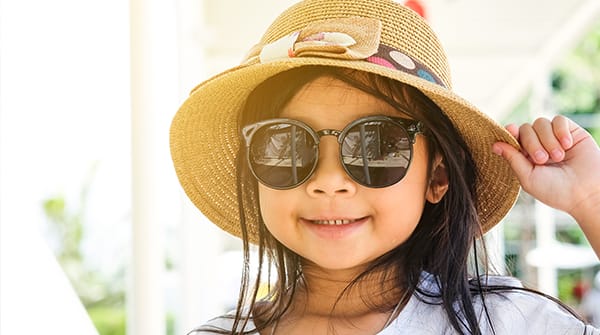
Wear Clothes.
Shirts, hats, shorts and pants shield your skin from the sun’s UV rays, reducing burn risk by 27%.
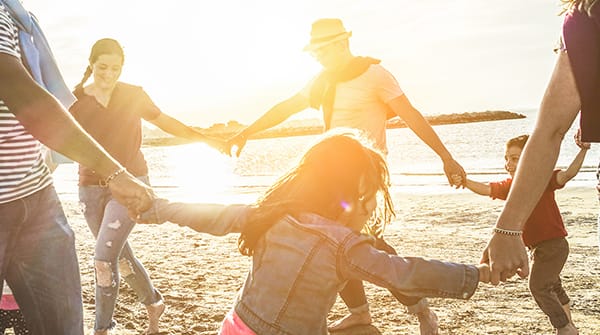
Plan Around the Sun.
Go outdoors in early morning or late afternoon when the sun is lower in the sky.
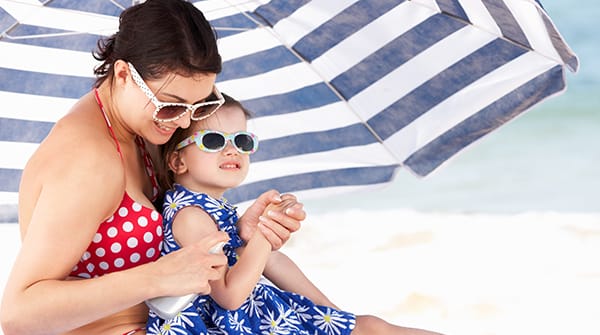
Find Shade — or Make it.
Picnic under a tree or take a canopy to the beach. Keep infants in the shade, reducing the risk of multiple burns by 30%.
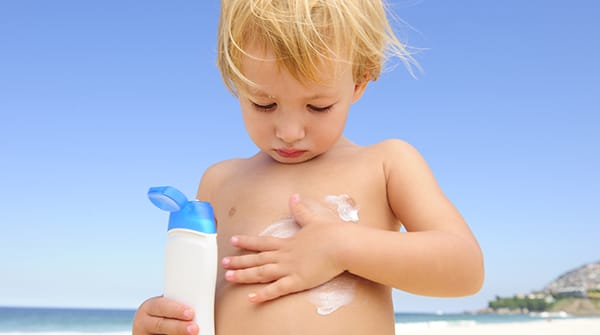
Don't Get Burned.
Red, sore, blistered skin means you’ve gotten far too much sun.
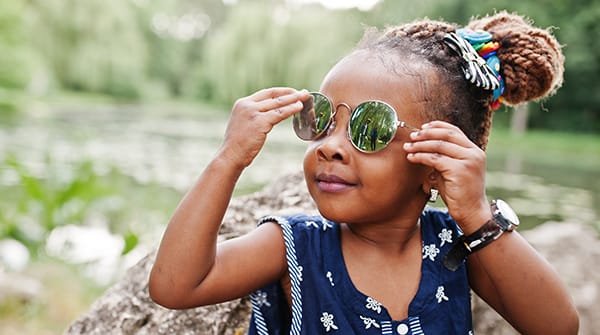
Sunglasses Are Essential.
Not just a fashion accessory, sunglasses protect your eyes from UV radiation.
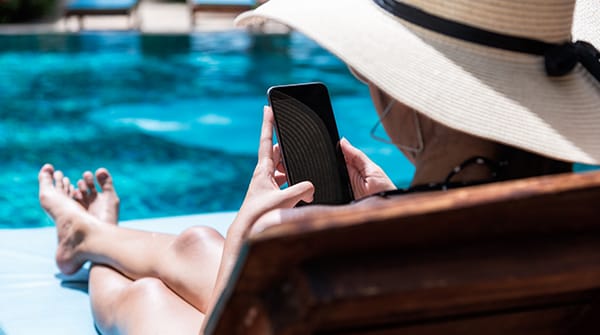
Check UV Index.
The UV Index provides important information to help you plan your outdoor activities in ways that prevent sun overexposure.



